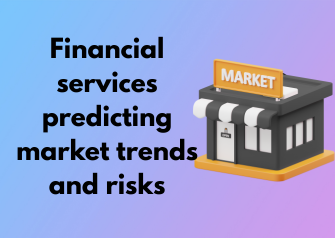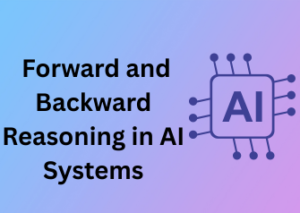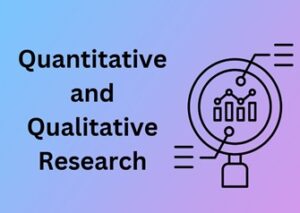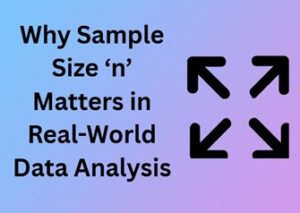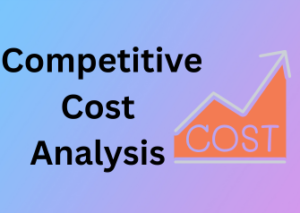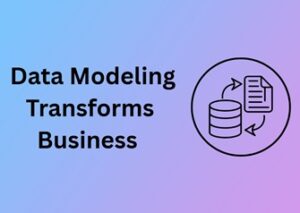Have you ever paused to wonder how financial analysts anticipate market shifts, uncover risks, or make those high-stakes predictions that seem, well, almost magical? Spoiler alert: it’s not magic—it’s data, lots and lots of it. But transforming raw data into actionable decisions is where the real artistry (and science!) lies. Let’s break it down, shall we?
Financial markets are vast and intricate ecosystems, and navigating them requires more than surface-level observations. At its heart, predicting market trends relies on a seamless transformation of information into practical strategies.
This process hinges on two pillars: data collection and data analysis.
Step 1: Gathering the Right Data
In the financial world, data flows in continuously from every direction—stock prices, economic reports, geopolitical events, customer transactions, and even weather patterns (yes, really!). The key here isn’t just about collecting mountains of data but ensuring you have the right data. After all, analyzing irrelevant or outdated information is like trying to steer a ship with a broken compass—confusing and potentially disastrous!
- Structured Data: Think of clear, formatted data like stock prices, interest rates, or GDP reports. These are the bedrock of forecasting models.
- Unstructured Data: This refers to messy but insightful sources like social media sentiment, news headlines, or even CEO interviews. It might not fit neatly into spreadsheets, but with the right tools, it can reveal hidden opportunities or risks.
Step 2: Decoding Data into Predictions
Even the most comprehensive data set remains just that—data—until it’s processed and interpreted. Financial analysts use everything from statistical techniques to advanced machine learning models to sift through the noise and uncover meaningful trends. But, here’s the catch: the power of the analysis is directly proportional to its precision.
For instance, predictive models don’t just look at what happened yesterday; they examine relationships between variables. Why did a particular stock outperform last quarter? Was it because of strong earnings, lower competition, or favorable consumer behavior? Knowing the story behind the numbers is crucial to ensuring informed decisions.
Advice for Real-World Application
If you’re looking to integrate data-driven decision-making into your financial journey (and trust us, you should!), here are some tips:
- Invest in technology: Tools like Bloomberg Terminals, Tableau, or even beginner-friendly platforms like Excel can help you start visualizing trends.
- Keep learning: Whether it’s statistical methods or staying updated on key economic indicators, continuous learning equips you to decode patterns more effectively.
- Focus on quality over quantity: Working with smaller, accurate datasets is more impactful than drowning in poorly organized information.

Analyzing Behavior Patterns: Human Influence in Financial Predictions
When it comes to predicting the financial markets, it’s easy to dive into numbers, algorithms, and technical jargon. But let’s hit pause for a second and remember one crucial factor: humans. Yes, you, me, and everyone else—our collective behaviors, decisions, and emotions play a pivotal role in shaping markets. Beneath the charts and data models, there’s a fascinating web of human behavior that can be just as impactful, if not more, than the hard mathematics of finance.
What Drives Human Behavior in Finance?
The financial market is not an impersonal machine. It’s a living, breathing ecosystem fueled by decisions that range from professional investors making measured calls to novice traders driven by speculation. But what shapes these decisions?
- Emotion: Fear and greed are two of the most well-documented emotions driving financial decisions. Panic selling during a market crash or impulsive buying during a rally ties directly to human psychology.
- Herd Mentality: Ever notice how people tend to follow trends? If one investor sees others buying stock in a hot company, they might join the crowd without critically evaluating if it’s a sound investment. This collective movement can have ripple effects.
- Biases: Humans are hardwired with cognitive biases like overconfidence (“this investment will definitely make me rich”) or loss aversion (“I can’t afford to lose any amount at all”). Even experienced traders aren’t immune to these forces.
Behavior Patterns and Market Predictions
Why does human behavior matter so much in financial predictions? Quite simply, it causes markets to move in ways that aren’t always logical. Analysts and predictive models often aim to pinpoint patterns in this behavior to gain insights into market trends. Here are some ways behavioral analysis enhances financial predictions:
- Identifying Trends: Observing mass movements in investments—such as sudden spikes in interest in renewable energy stocks—can hint at emerging trends or bubbles.
- Recognizing Triggers: Non-financial events, such as political uncertainty or global crises, often trigger emotional reactions in markets. Understanding how these events impact human decisions allows analysts to build better models to predict fallout.
- Predicting Corrections: Overreaction is common in the financial world. By studying behavioral patterns, financial experts can anticipate market corrections, where prices stabilize after an emotional spike or drop.
Blending Human Intelligence and Predictive Technologies
So, how do we effectively integrate behavior patterns into market predictions? The key is recognizing that humans and technology must work hand in hand. Advanced analytics tools powered by AI and machine learning can analyze vast amounts of data to detect patterns, but they need a human touch to interpret the emotional and psychological drivers behind those patterns.
For example, AI might notice a surge in social media chatter about a particular stock. While the machine can flag this as a trend, a human analyst will verify whether it’s based on substantial news or simple hype, like a celebrity endorsement gone viral. The symbiosis between human insight and technological capability allows for more nuanced predictions.
Adopting Tech-Driven Insights Without Overcomplicating Outcomes
Let’s face it, the financial sector loves innovative technology. From AI-powered algorithms to blockchain-based solutions, the idea of using cutting-edge tools to gain a competitive edge in the market is undeniably exciting. But here’s the catch: adopting tech-driven insights doesn’t have to be—and frankly, shouldn’t be—overly complicated. The goal should always be to simplify decision-making, not overburden processes with confusing jargon or intimidating systems. So, how do we strike this balance? Let’s dive in.
Start with the Basics: What Problem Are You Solving?
Before diving headfirst into a swarm of new technologies, take a step back and ask yourself: What specific challenge or opportunity are you trying to address? Whether it’s improving portfolio performance, mitigating risks, or identifying lucrative investment opportunities, technology’s role is to make things easier—not harder. A clear goal will help you cut through the noise and choose tools designed to deliver practical outcomes.
Keep Your Tech Simple and Transparent
One of the biggest mistakes financial firms make when adopting tech-driven tools is falling for the allure of complexity. Sure, machine learning models that work on 15 layers of neural networks sound impressive, but can your team actually interpret the results? Insights should always be actionable, meaning that decision-makers can quickly understand the output and use it to inform their strategy.
For instance, consider predictive analytics platforms. A good system clearly highlights patterns, probabilities, and their potential impact. If the insights require hours of explanation or specialized technical expertise, it’s time to re-evaluate tools that prioritize simplicity and clarity over complexity.
The Power of Visualization
Never underestimate the value of a well-designed visual dashboard. Humans process visual data faster than rows of raw numbers or reports filled with dense statistics. Dynamic charts, heatmaps, and trend lines can turn mountains of data into digestible insights at a glance. These tools not only speed up decision-making but also allow financial professionals to communicate findings more effectively across teams or when presenting to clients.
Collaboration Between Tech and the Human Touch
Technology should enhance human effort, not replace it. While AI and analytics tools can automate repetitive tasks or detect patterns that individuals may miss, seasoned professionals bring critical thinking, context, and emotional intelligence to the table. When selecting tech, make sure it supports collaboration between your tools and your team.
- Focus on tools that automate the mundane, freeing up time for strategic thinking.
- Ensure the system reads as a partner by offering recommendations instead of mandates.
- Allow experts to tweak or override automated suggestions if market conditions call for it—it’s not a “set it and forget it” game.
Avoid Analysis Paralysis
With so many advanced tools available, it’s easy to fall into the trap of trying to track too much data at once. This can lead to “analysis paralysis,” where decision-makers feel overwhelmed by an overload of information. Instead, focus on the metrics that matter most. Be mindful of the law of diminishing returns—as data complexity increases, the additional value you derive may shrink.
Risk Signals: Indicators Every Financial Service Needs to Monitor
When navigating financial markets, risk is not a mere buzzword—it’s a constant companion. While some risks are simply unavoidable, being able to detect warning signs early can make all the difference between thriving and stumbling. For financial services, understanding and monitoring key risk signals is like having a radar system that keeps you prepared for storms ahead. Let’s break this down into digestible insights so you can safeguard your strategies without feeling overwhelmed.
1. Market Volatility: The First Line of Defense
Market volatility is often one of the clearest signals that risk is up ahead. Sudden, sharp price swings in stocks, bonds, or commodities can indicate investor uncertainty, economic instability, or major geopolitical events. Think of volatility indices, like the VIX (commonly dubbed the “Fear Index”), as the thermometer for market sentiment.
But how do you handle it? For starters, pay close attention to sectors or regions showing unusual activity. Broad-based market turmoil might signal a systemic problem, while isolated spikes could hint at unique opportunities or threats in specific industries. The key is to remain calm and assess whether the swings are short-term noise or longer-term disruptions.
2. Credit Spreads: Measuring Financial Health
Credit spreads—essentially the difference between yields on bonds of different risk levels—serve as an excellent barometer for systemic health. When credit spreads widen, it can signal concerns about defaults or a tightening credit environment, both of which pose challenges for companies and, in turn, financial services.
As a financial professional, you’ll want to watch these closely. For example, if corporate bond spreads begin diverging significantly from government bonds, it may indicate that stress is brewing in the corporate sector. This insight could shape the risk level of portfolio decisions or lending practices.
3. Liquidity Indicators: Not All Cash Flow is Created Equal
Downtime in liquidity can spell trouble. Financial crises, like those in 2008, often highlight how overlooked liquidity risks can escalate quickly. Low turnover in equity markets, reduced availability of credit, or unpredictable withdrawal patterns in deposits can erode confidence and leave institutions scrambling for solutions.
Maintaining a sharp eye on liquidity metrics, such as bid-ask spreads or central bank interventions, will help you judge whether market functioning is smooth or headed toward a bottleneck. Think of liquidity as the oil that keeps the financial engine running—if that oil starts drying up, things can go awry quickly.
4. Economic Indicators: Connecting the Dots
Economic signals like unemployment rates, inflation data, and GDP growth aren’t just academic; they directly influence financial markets. Rising unemployment might dampen consumer spending and corporate revenues, while inflation spikes can lead to higher interest rates, which often reduce borrowing and pressure certain sectors.
Integrating these macro-level metrics into your risk-monitoring framework is like switching from a basic GPS to a satellite view. It gives you a bird’s-eye perspective, helping you identify the broader dynamics that could amplify risks.
5. Cybersecurity Threat Levels: A Modern-Day Essential
In today’s digital-first world, financial institutions must keep an eye on evolving cybersecurity risks. Data breaches, ransomware threats, or phishing attacks can not only affect consumer trust but also lead to regulatory penalties and financial losses. Threat intelligence tools that monitor global patterns of cyberactivity can provide critical early warnings.
Never underestimate the importance of internal risk training as well. Even the best systems can be undermined if employees fall for common cyberattacks. Think of this as the human firewall—a vital first layer of defense.
The Role of Historical Trends: Balancing the Past and the Present
Hello there! Let’s dive into something pretty fascinating and important in the world of financial services—historical trends. You know, those patterns from the past that quietly shape how we make decisions today? The role they play in financial predictions is like an unsung hero in the market drama. In this piece, we’ll uncover why balancing the past with the present is crucial and how to make the most out of history without letting it dominate your strategy.
Understanding Why History Matters
“History repeats itself” may sound like a cliché, but when it comes to financial markets, it’s spot on—well, to a certain extent. Historical data gives us a foundation to understand how markets behave under different conditions. Whether it’s spotting cycles in the stock market, analyzing the aftereffects of a major economic event, or identifying seasonal patterns, historical trends give us valuable clues.
The beauty of history isn’t just in the numbers, though; it’s in the stories they tell. When we look at past events like the dot-com bubble or the financial crisis in 2008, we’re not just identifying bad times—we’re learning what led to those moments and, more importantly, how the markets eventually recovered. This knowledge arms us with wisdom to navigate future uncertainties confidently.
Don’t Drown in the Past: Avoid Historical Bias
Now, here comes the tricky part—leaning too far into history. It’s tempting to see a trend from decades ago and assume it’ll play out exactly the same way today. But financial markets are not static. Economies evolve. Technologies advance. Policies and global dynamics shift. A trend is only as good as the context around it.
Take, for example, the evolution of the tech industry. While historical data from the early 2000s might give us valuable insights, the sheer scale and speed of innovation today (hello, AI!) mean that you can’t blindly use outdated patterns to set your course.
Blending the Past and Present: Finding the Sweet Spot
So, how do you strike the right balance? The key is to use historical trends as a guide—not as a rigid rulebook. Here are a few tips to keep in mind:
- Context is Key: Always ask: “What were the circumstances surrounding this trend?” Compare them to current conditions before drawing conclusions.
- Pair History with Fresh Data: Marry historical insights with real-time market data to paint a complete picture. Tools like machine learning can help you do this seamlessly.
- Focus on Leading Indicators: Identify patterns that consistently signal shifts and monitor how they interact with today’s financial landscape.
Learning from History Without Getting Stuck
Historical trends are best used as a springboard for ideas, rather than a cage that traps your flexibility. The most successful financial strategists don’t rely solely on what’s happened—they also try to predict what might happen. By adding a layer of forward-thinking to the historical trends we observe, we stand to gain incredible insights.
In essence, the past is there to guide you, but the present is where the action is. Finding that balance between respecting historical trends while adapting to modern-day variables is a winning formula. In the fast-changing world of finance, keeping an eye on history while staying rooted in today’s context is not only smart—it’s essential.
Bridging Predictive Models with Ground-Level Market Realities
Ah, the perfect balancing act: bringing the sophistication of predictive models down from their ivory towers and ensuring they don’t lose touch with the messy, dynamic world of real-life financial markets. It’s like having a super smart, tech-savvy friend who can also meet you halfway to explain things over a cup of coffee. Let’s dive into this fascinating interplay between advanced algorithms and day-to-day market realities!
Why Predictive Models Aren’t Always Right (And That’s Okay!)
Here’s the thing about predictive models: while they are deeply impressive, they’re not omniscient. These models crunch historical data, assess probabilities, and use advanced AI techniques to anticipate future trends. But there’s a catch: markets don’t exist in an isolated vacuum. They breathe, evolve, and react to breaking news, policy updates, geopolitical tensions, and even unexpected tweets. Predictive models simply can’t account for every possible “curveball” thrown their way.
That’s why the key lies in complementing these models with a grounded understanding of current market conditions. Consider predictions as a highly informed weather forecast—they’re useful, but you wouldn’t leave your umbrella just because there’s a 10% chance of rain, right?
Bridging the Gap: Where Science Meets Art
Financial markets are as much about human behavior and psychology as they are about raw data. A well-trained predictive model might identify a drop in a stock price based on historical patterns, but it might miss out on the public sentiment wildly swinging in one direction due to a trending news story. Put simply, the art of judgment—human intuition—is a vital partner to the science of algorithms.
Bridging this gap requires a few essentials:
- Dynamic Calibration: Keep your models flexible. The market changes quickly, and static models can lag. Regularly recalibrate your insights by factoring in fresh market data and evolving variables.
- On-the-Ground Monitoring: Don’t let models replace your real-time awareness. Stay tuned to economic news, investor behavior, and geopolitical events that might not immediately reflect in the data.
- The Human Touch: Incorporate your team’s market expertise. No machine can replicate the nuanced decision-making skills of experienced investors and analysts who’ve “been in the trenches.”
The Importance of Adaptability
The financial world is nothing if not unpredictable (2020, anyone?). To succeed, financial firms must develop a fine-tuned balance between trusting their predictive models and being ready to switch gears when market realities shift. Here’s an example: imagine your model predicts steady growth in a stock based on consistent historical returns. Then, a major CEO resignation makes headlines, and investors begin panicking, causing a sell-off frenzy. A rigid reliance on the model might have missed this sudden behavioral shift entirely.
So what’s the takeaway? Build predictive models that aren’t just “smart”—make them “adaptable.” Allow them to incorporate real-time data streams and respond quickly to emerging market shocks. This way, your teams can blend analytical insights with their boots-on-the-ground understanding.
Building Resilience While Preparing for Financial Uncertainty
Let’s be honest — the financial world is filled with twists, turns, and moments that can take even the most seasoned professionals by surprise. Market volatility, sudden economic shifts, and unforeseen risks all come with the territory. But here’s the good news: preparing for uncertainty isn’t about having a crystal ball. It’s about building resilience. Let’s dive into how financial services can prepare for the unpredictable and bounce back stronger when challenges arise.
1. Strengthen Your Foundations
Building resilience starts with a rock-solid foundation. For financial services, this means ensuring that your strategies, processes, and teams can handle stress without losing focus. Here’s how you can prioritize the essentials:
- Maintain a diversified portfolio: This age-old advice never goes out of style. Diversification reduces exposure to sector-specific risks and helps cushion against sudden market changes.
- Regularly assess cash reserves: Liquidity is key in times of uncertainty. Having access to sufficient cash ensures flexibility to navigate unexpected downturns or opportunities.
- Build adaptable frameworks: Commit to reviewing and updating financial models and operational approaches regularly. Flexibility fortifies your ability to respond to sudden disruptions.
2. Embrace a Proactive Risk Management Strategy
Resilience doesn’t come from crossing your fingers and hoping things go smoothly. It’s the result of proactive, thoughtful risk management. Financial services must invest time and resources in identifying potential risks before they become realities:
- Monitor real-time indicators: Stay informed of global and local economic factors, geopolitical developments, and emerging industry trends that might impact your operations.
- Run stress tests: Simulate worst-case scenarios — from sudden market crashes to changes in interest rates — to understand how your organization would fare.
- Identify interconnected risks: Risks don’t typically occur in isolation. For example, a supply chain disruption might ripple into broader economic instability. Understanding these layers can make your response stronger.
3. Invest in Human Capital
We tend to focus on systems, analytics, and algorithms, but let’s not forget that resilience is also about the people behind the numbers. Your workforce is your front line during uncertainties, and empowering them can make all the difference:
- Continuous learning: Offer ongoing training programs to help employees stay ahead of emerging trends and tools, fostering creativity and innovative thinking.
- Effective communication: Transparent communication between teams and leaders builds trust and ensures teams remain aligned when big decisions need to be made.
- Leverage diverse perspectives: Encourage input from employees with different backgrounds, roles, and expertise — this often leads to fresh solutions in times of crisis.
4. Adapt and Thrive
No roadmap perfectly charts the future, but resilient strategies empower financial services to adapt to the unexpected. Think of it as building a muscle: the more flexibly you react to challenges, the stronger and more confident your future decisions will become. Leverage technology to predict potential stumbling blocks but don’t let it replace intuition and human judgment. Balance innovation with time-tested principles to achieve the best of both worlds.

